Understanding X-ray Inspection within the Food industry
Loma Systems has been designing, manufacturing and supporting X-ray inspection systems for food and pharmaceutical manufacturers since 1998. Unlike metal detectors which detect only metal, X-ray inspection systems can also detect contaminants such as stone, calcified bone, glass and dense plastic whilst simultaneously checking for missing or damaged products.
Over the years, Loma has been asked many interesting questions about X-ray inspection systems and below are some of the most popular Q&A’s.
Yes X-ray inspection systems are perfectly safe if you follow the intended use. The X5 X-ray series feature radiation protection to ensure that emissions are kept below 1 μSv/hour during operation. By their very nature, X-ray systems used for food inspection are safe and emissions are significantly less than many naturally occurring radiation sources such as medical X-rays, Radon gas, Gamma decay in rocks, cosmic rays and even the Sun. The world’s average “background” rate of radiation is around 2.7 mSv/yr. Working a 40 hour week for 48 weeks per year next to a LOMA X-Ray system equates to 0.78mSv/yr less. A transatlantic flight for 8 hours provides a much higher dose of radiation than a Loma X-ray inspection system. You can read more information about are X-rays safe for food production here.
Yes, Loma’s X-ray systems have been designed to be easy to use to allow anyone with good health to operate the machine following basic training received when the system is first commissioned. It is recommended that pregnant women should NOT work in an area where an X-ray system is in operation. Just like metal detection, in order to have a deeper understanding of the system and its full capabilities pre-designed training courses are available at all levels including engineer and Subject Matter Experts (SME). It is worth noting that a Radiation Protection Supervisor (RPS) is always required to be present within your factory when the X-rays are running – for more details please see the question below.
Although both X-ray inspection and metal detection are used to check for contaminants within food and pharmaceutical products, the technologies have different capabilities and advantages. Each technology will be important for different reasons depending on the application and situation. Metal detectors are principally used when only detection of metal contaminants is required, which is why they tend to be the cheaper option and as technology has moved on over the years the contaminant sizes that can be achieved are very good. Alternatively X-ray inspection systems offer the ability to not only detect for all metals, but also other contaminants such as bone, ceramic, glass and dense plastics. X-ray inspection is also capable of checking the product integrity – making sure the product is complete and free of defects. It is also worth noting X-ray inspection systems can typically reliably see smaller contaminants in harder to inspect products compared with a metal detector.
It depends on the application, sensitivities required and budget. While a metal detector can find smaller pieces of aluminum, X-ray systems tend to pick up smaller ferrous, non-ferrous and stainless-steel contaminants. Food manufactures moving to metalized packaging or foil trays from plastic packaging should consider a switch to X-ray inspection as Ferrous in foil metal detector heads have typically been used in the past for this type of application, but they offer poor sensitivities and will not pick up stainless-steel contaminants (which is most of the production line). It is also preferred that X-ray inspection is used for this type of application by some retailers where possible rather than Ferrous in Foil metal detector heads.
As with any food inspection system, it depends on the application, where you want to inspect within the production process, the size of your product and what foreign contaminants you are looking to detect. Loma’s X5 X-ray systems are available for a wide range of applications including bulk, packaged, loose and pumped products, for different industries. As an example: If you are looking at a solution within primary processing making sausages, to try and get the best detection of contaminants (such as bone), and to remove waste before it goes through other costly processes, it would be worth considering an X5 Pipeline to be used near the beginning of the process.
This is due to the light wave (X-ray beam) that hits the silicone above the photo diodes, which then glows white. When an object is passed through the beam, it absorbs an amount (dependent on density) of the X-ray. This affects the silicone which does not glow as much, therefore, you only see the image as a shade (grey-scale).
Yes, Loma’s X-ray inspection systems come with software built in, called X-weigh, which converts product density into weight which is great for certain applications such as yogurts and ready meals. For example if you are weighing a product that has two compartments a checkweigher will check the total weight, where a X-weigh will check each compartment separately providing both an individual and overall weight. This will let you know if there is too much of one component, which could be caused by an issue with a portioning machine, resulting in an inferior product. X-weigh does not conform with weights and measures so a checkweigher would be required to do the total overall weight check.
X-ray is very versatile at finding different contaminants, but with plastic it depends on its characteristic and the type of product you are trying to inspect it within. The orientation of the plastic within the product impacts the ease of detection, for example if the plastic contaminant is in a horizontal orientation it will absorb fewer X-rays due to its density (thickness) and will not be detected. As a rule of thumb, if it floats, an X-ray system will not be able to detect that contaminant. This is the same for most makes and models of X-ray Inspection systems used within food production.
Just like metal detection, there are two types of calibration associated with X-ray systems. Firstly in order to maintain designated Codes of Practice or HACCP protocols, X-ray systems should be calibrated once a year to normalize the detector and make sure the system is working correctly. Secondly an X-ray system will need to be calibrated for every new product so that the system can ‘learn the product’ and set up limits to achieve the best contaminant detection size possible. Once a product has been learnt once, it can then be recalled at the click of a button with no need to relearn unless there is a change in the product or if an error occurs.
When installing an X-ray inspection system into a factory for the first time there are varying requirements depending on your location, but one of our representatives can talk you through the easy processes. For the relevant information in your area please contact your local Loma office or distributor. Below is an example based on the United Kingdom.
- Your X-ray system will need to be registered with the Local Health and Safety Executive prior to use. (Details on your local health and safety executive can be found here)
- You will need to consult and appoint a Radiation Protection Adviser (RPA) prior to turning the machine on. Organisations who offer this service in the UK include Radman Associates or Public
- Health England (PHE).
- Your RPA will work with you to do the following:
- Draw up your local rules (what you can and can’t do onsite relating to your application and equipment)
- Complete a Risk Assessment
- Train your appointed Radiation Protection Supervisors RPS (An RPS must be present at all times whilst the X-rays are running)
- This process will take around 28 days, depending on the availability of your chosen RPA. Once the system is up and running, you are required to carry out radiation tests at regular intervals outlined by your RPA.
The X5 Range of Inspection Systems

X5C Compact
Designed with retail-packed convenience food in mind the X5C is the smallest X-Ray system available, with a machine length of 1000mm and offers first-class CCP protection in the smallest footprint possible - and Designed to Survive.
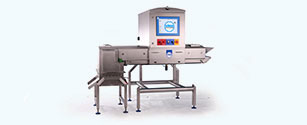
X5 Bulkflow
Designed to be integrated into line with optional reject stations, the X5 Bulkflow X-ray is perfect for loose and free flowing products.
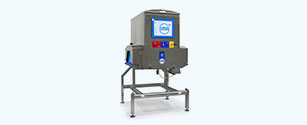
X5 SpaceSaver
Designed to be integrated into line with optional free standing reject, available in 300mm and 500mm belt width models, the X5 SpaceSaver is perfect for packed products with a width of up to 250mm.
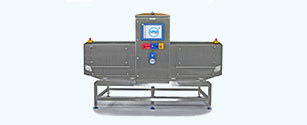
X5 XL800
Designed to be integrated into the production process at either the beginning to protect equipment or at the end to protect consumers, the X5 XL 800 is perfect for products such as meat in Euro crates or cheese in bulk boxes.
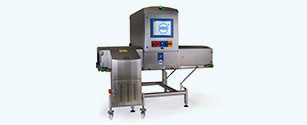
X5 Pack
Designed to be integrated into line with built-in automatic reject and available in 300, 500 and 600mm belt width models, the X5 Pack is perfect for a variety of unpackaged and packaged products.
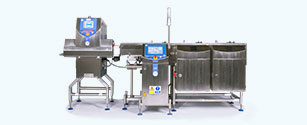
X5C & CW3
The X5c & CW3 Check & Detect Combination System is designed for detecting contaminants and reducing giveaway in food products. This system is perfect for inspecting retail-packed convenience food, ready meals in foil trays and small end-of-line packaged goods up to 280mm wide by 110mm high.

X5 Pipeline
The X5 Pipeline is perfect for inspection of pumped protein applications where there is the possibility of metal, bone, ceramic or glass contaminants.
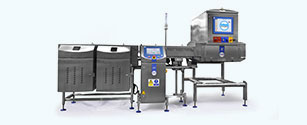
X5 SpaceSaver & CW3
The X5 SpaceSaver/CW3 Check & Detect Combination System is designed for detecting contaminants and reducing giveaway in food products. This system is perfect for inspecting retail-packed convenience food, ready meals in foil trays and small end-of-line packaged goods.
If you need more information contact us on 01252 893 300 or request expert advice
If you need some advice, please feel free to call us or request an expert, click the button and fill out the form.
We have a UK based customer service team ready to help and keep your food safe.
